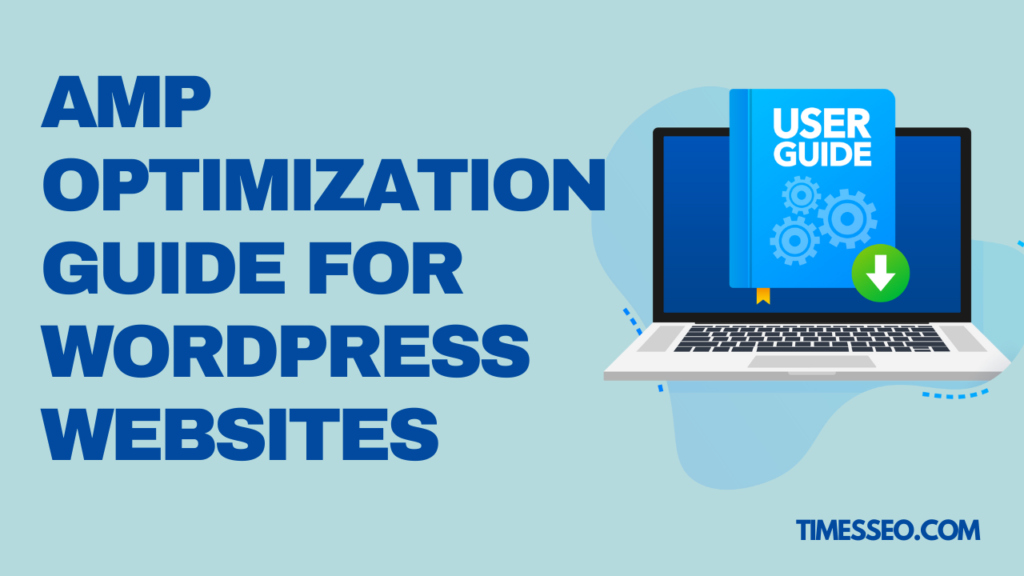
AMP Optimization Guide for WordPress Websites
The AMP Optimization Guide for WordPress Websites provides a step-by-step approach to boosting mobile speed, enhancing SEO, and improving user experience. This comprehensive AMP optimization guide covers benefits, setup, best practices, common issues, and testing methods to ensure your WordPress site loads lightning-fast on mobile devices while maintaining search rankings.
Table of Contents
Introduction
What is AMP?
AMP, short for Accelerated Mobile Pages, is a Google-backed open-source project designed to make web pages load almost instantly on mobile devices. It strips down unnecessary scripts, optimizes content delivery, and ensures mobile users get a lightning-fast browsing experience.
Why AMP Matters for WordPress Sites
With most traffic coming from mobile devices, speed has become a key ranking and conversion factor. AMP helps WordPress site owners meet Google’s Core Web Vitals and deliver an exceptional user experience without sacrificing SEO performance.
Benefits of Using AMP on WordPress
Faster Page Loading
AMP removes bloated code, prioritizing essential elements so your pages load in under two seconds on mobile.
Improved Mobile Experience
AMP guarantees seamless scrolling and speedy navigation for users on smartphones and tablets by utilizing a reduced HTML structure and caching.
SEO Benefits
Google rewards fast-loading sites, and AMP pages often appear in mobile search carousels, improving visibility.
Better User Engagement and Conversions
Faster pages mean lower bounce rates, higher session duration, and improved conversion rates for e-commerce or lead generation sites.
How AMP Works
Core Components of AMP
AMP relies on three main components:
- AMP HTML – A restricted version of HTML with custom AMP tags.
- Resource loading is controlled using AMP JS to guarantee peak speed.
- AMP Cache – Google’s caching system that delivers AMP content faster.
Setting Up AMP on WordPress
Choosing the Right AMP Plugin
Official AMP Plugin
Developed by the AMP Project contributors, it integrates AMP seamlessly with your WordPress theme.
AMP for WP – Accelerated Mobile Pages
Offers more customization, ad support, and integration with popular SEO plugins.
Glue for Yoast SEO & AMP
If you’re using Yoast SEO, this plugin ensures AMP compatibility with your meta tags and schema.
Best Practices for AMP Optimization
Optimize Images for AMP
For quicker loading, use the <amp-img> tag and compressed images.
Minimize CSS and JS
Keep styles simple and steer clear of custom JavaScript whenever you can because AMP mandates a 75KB CSS restriction.
Use Structured Data Markup
Use schema markup to improve SEO and make your content easier for search engines to understand.
Enable AMP Analytics
Track AMP-specific visitor behavior using Google Analytics or other tracking tools.
Testing and Validating AMP Pages
Using Google’s AMP Test Tool
Check your AMP pages for errors and compliance with AMP guidelines.
Validating AMP in Search Console
Monitor AMP-specific reports in Google Search Console for indexing and error tracking.
SEO Considerations for AMP Pages
Mobile-first Indexing and AMP
For consistent indexing, make sure your desktop and AMP content are same.
Avoiding Duplicate Content Issues
Use canonical tags to link AMP and non-AMP versions correctly.
Optimizing Meta Tags for AMP Pages
Ensure your title, meta description, and open graph tags are AMP-friendly.
Common AMP Optimization Issues and Fixes
CSS Size Limit Exceeded
Reduce custom styles, use inline CSS sparingly, and optimize for AMP’s 75KB limit.
JavaScript Restrictions
Replace unsupported scripts with AMP components like <amp-carousel> or <amp-iframe>.
AMP Validation Errors
Use validation tools to fix HTML tag misuse, invalid attributes, or unsupported code.
Tracking AMP Performance
Google Analytics for AMP Pages
Integrate AMP analytics tracking to measure pageviews, bounce rates, and engagement.
AMP-specific Event Tracking
Set up event tracking to monitor specific actions like button clicks or form submissions.
When Not to Use AMP
Limitations of AMP for Certain Websites
AMP might not be ideal for highly interactive or JavaScript-heavy websites.
Alternatives to AMP
Consider using responsive web design, progressive web apps (PWAs), or server-side optimization.
Conclusion
AMP can transform your WordPress website’s mobile performance, boosting SEO, user satisfaction, and conversion rates. By following best practices and regularly testing your AMP pages, you can maintain a fast, mobile-optimized site without sacrificing quality or features.
Frequently Asked Questions
No, AMP is designed for mobile versions, leaving your desktop site unaffected.
Yes, especially for mobile search speed and Core Web Vitals performance.
Absolutely—AMP supports multiple ad networks, though with some restrictions.
Not necessarily, but you may need to make minor adjustments for compatibility.
Use Google’s AMP Test Tool or Search Console to validate and monitor performance.
Table of Contents
Popular Posts
-
 Affordable Technical SEO Audit for Small Business: A Complete Guide26 Jun 2025 SEO Audits
Affordable Technical SEO Audit for Small Business: A Complete Guide26 Jun 2025 SEO Audits -
 How to Get an Affordable Technical SEO Audit for Small Business27 Jun 2025 SEO Audits
How to Get an Affordable Technical SEO Audit for Small Business27 Jun 2025 SEO Audits -
 The Ultimate Local SEO Audit Checklist for Startups28 Jun 2025 SEO Audits
The Ultimate Local SEO Audit Checklist for Startups28 Jun 2025 SEO Audits -
 Local SEO Audit Checklist for Startups: A Beginner’s Guide28 Jun 2025 Affiliate Marketing
Local SEO Audit Checklist for Startups: A Beginner’s Guide28 Jun 2025 Affiliate Marketing -
 Top On-Page SEO Audit Steps for Service Websites Every Business Should Know29 Jun 2025 Affiliate Marketing
Top On-Page SEO Audit Steps for Service Websites Every Business Should Know29 Jun 2025 Affiliate Marketing -
 Technical SEO for WordPress: The Ultimate Beginner’s Guide01 Jul 2025 Affiliate Marketing
Technical SEO for WordPress: The Ultimate Beginner’s Guide01 Jul 2025 Affiliate Marketing -
 The Impact of On-Page SEO Audit Steps for Service Websites on UX01 Jul 2025 On Page Seo
The Impact of On-Page SEO Audit Steps for Service Websites on UX01 Jul 2025 On Page Seo -
 Technical Mobile SEO Audit Tips for Developers02 Jul 2025 Affiliate Marketing
Technical Mobile SEO Audit Tips for Developers02 Jul 2025 Affiliate Marketing -
 Complete SEO Backlink Audit Guide for Better Google Rankings03 Jul 2025 SEO Audits
Complete SEO Backlink Audit Guide for Better Google Rankings03 Jul 2025 SEO Audits -
 Boost Your Rankings with Technical SEO for WordPress01 Jul 2025 Technical Seo
Boost Your Rankings with Technical SEO for WordPress01 Jul 2025 Technical Seo






